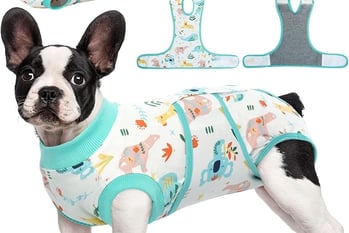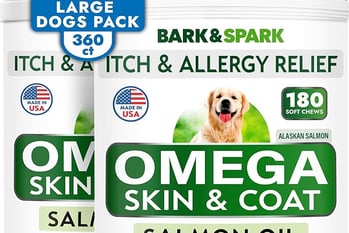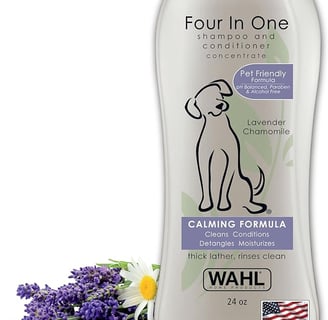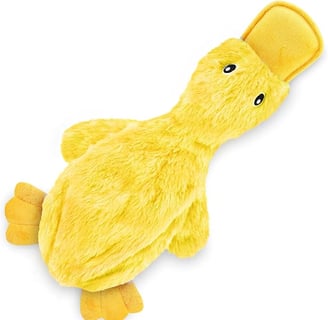Ultimate Checklist for New Puppy Parents: Everything You Need for Your Fur Baby
6 min read


Essential Supplies for Your Puppy
Welcoming a new puppy into your home is an exciting adventure, but it also requires careful preparation. One of the first steps to ensure a smooth transition is gathering essential supplies that will help you care for your furry companion effectively. These items not only provide comfort and safety to your puppy but also support their overall well-being.
The foundation of any puppy supply list begins with food and water bowls. Opting for stainless steel or ceramic bowls is advisable, as they are more durable and can be easily cleaned compared to plastic options. When selecting bowls, ensure they are appropriately sized for your puppy's breed and growth stage. Additionally, these should be stable enough to prevent tipping during enthusiastic feeding times.
Puppy food is another critical supply that merits careful consideration. It is crucial to choose high-quality, age-appropriate food to support your puppy's nutritional needs while they grow. Consulting with your veterinarian can provide you with the best recommendations specific to your puppy's breed and health requirements.
Toys play an essential role in your puppy's development and should not be overlooked. Select a variety of toys that cater to different needs, such as chewing, fetching, and mental stimulation. Durable chew toys will satisfy your puppy's instinct to gnaw, while interactive toys can keep their minds engaged.
Grooming tools, including brushes and nail clippers, are also imperative for the care of your puppy, especially as their coat begins to grow. Regular grooming helps maintain a healthy coat while getting your puppy accustomed to handling. Furthermore, a comfortable crate can be a safe haven for your puppy, providing them with their own space, which is particularly beneficial during crate training.
Finally, selecting appropriate bedding for your puppy is essential for ensuring their comfort. Opt for a bed that offers adequate support, warmth, and is easy to clean. Sufficient attention to details, such as size and material, will significantly contribute to a secure and cozy environment for your new best friend.
Creating a Safe Environment
Establishing a safe environment is paramount for new puppy parents. The first step involves identifying potential hazards in the home. This may include sharp objects, toxic substances, or small items that can be swallowed. Conduct a thorough inspection of every room, ensuring that hazardous materials such as cleaning supplies, medications, and any toxic plants are stored securely out of the puppy's reach. It is advisable to utilize cabinets with childproof locks for added security.
Next, securing loose wires is essential to prevent any accidental chewing that could result in electrical shocks or other injuries. Consider using cable management solutions or protective coverings to tuck away cords and minimize exposure. Additionally, furniture can be rearranged to eliminate access to areas that could pose risks.
Utilizing baby gates is another effective method for maintaining a safe environment within the home. These gates can restrict access to certain rooms or stairs, allowing you to supervise your puppy and keep them away from potentially dangerous areas. It is important to ensure that these gates are sturdy and appropriately fitted to prevent any escapes.
Furthermore, trash cans should be secured with lids that are difficult for a puppy to open. Dogs often investigate their surroundings by using their mouths, making unsecured garbage a potential source of harmful items. An indoor trash can with a locking mechanism can help minimize this risk.
When preparing your yard or outdoor space, a thorough check of the fence is necessary to ensure it is well-maintained and tall enough to prevent climbing or jumping. Additionally, removing toxic plants from the vicinity is vital, as many common garden plants pose serious health risks to dogs. By implementing these measures, new puppy parents can create a calm, welcoming space that significantly reduces the risk of injuries while allowing their furry companions to explore safely.
Healthcare Essentials and Vet Visits
Ensuring the health and wellness of a new puppy is a crucial responsibility for any pet parent. One of the primary steps in maintaining your puppy's health is adhering to a comprehensive vaccination schedule. Puppies typically receive a series of vaccinations during their first year to protect against common diseases such as parvovirus, distemper, and rabies. This vaccination process usually begins at around six to eight weeks of age, with subsequent doses administered every three to four weeks until the puppy is about sixteen weeks old. Consulting with a veterinarian can help in crafting the optimal vaccination timeline tailored to your puppy's specific needs.
Regular veterinary check-ups are essential in managing your puppy’s overall health. These visits allow for thorough examinations, ensuring the puppy is growing appropriately and is free from any health issues. During these appointments, your veterinarian can also discuss preventive care options, including heartworm testing and vaccinations. Furthermore, establishing a solid relationship with a trusted veterinarian can provide invaluable support, ensuring timely care and advice throughout your puppy's life.
Parasite prevention is another important aspect of your puppy’s healthcare routine. Protecting your new furry friend from fleas, ticks, and intestinal worms can be achieved through a series of preventive measures. Your veterinarian can recommend suitable flea and tick treatments based on your puppy's age, weight, and lifestyle. These interventions are essential not only for the dog's comfort but also for their long-term health.
Setting up a health record for your puppy is highly beneficial. This record should detail vaccination dates, treatments administered, and any health concerns noted during vet visits. Additionally, being aware of basic health signs such as changes in appetite, behavior, or energy levels can help you detect potential issues early. Monitoring these indicators provides a supportive foundation for your puppy’s health and wellbeing in the years to come.
Training and Socialization Basics
Establishing a solid foundation for training and socialization is crucial for new puppy parents. Beginning this process early in your puppy's life not only facilitates better behavior but also fosters an emotionally balanced canine companion. Essential commands such as 'sit,' 'stay,' and 'come' form the cornerstone of effective communication between you and your puppy. These commands not only promote good manners but also serve as a safety net in potentially dangerous situations.
House training should be a priority for new puppy owners. The process typically involves a consistent schedule of bathroom breaks, making use of positive reinforcement techniques. This method encourages the puppy to associate specific spots with elimination, helping to reduce accidents indoors. Crate training can also be beneficial. By creating a comfortable and secure space, puppies learn to view their crate as a safe haven, which aids in house training and may also accommodate their instinctual need to den.
Another vital component of a puppy's early life is socialization. Introducing your puppy to various environments, people, and other animals helps minimize the likelihood of behavioral issues later on. Exposure to diverse settings will cultivate confidence in your dog, making them less fearful of unfamiliar situations. Training classes can facilitate this process, providing a structured environment for social interactions. When selecting a training program, opt for classes that use positive reinforcement methods while also incorporating socialization opportunities.
In addition to formal training, resources such as books, online tutorials, and local pet groups can also provide valuable insights for ongoing education. Engaging in these educational opportunities not only aids in the puppy's development but enhances the bond between the owner and pet. By prioritizing training and socialization, you set the stage for a well-mannered, sociable pet that will positively integrate into your family and the community.























